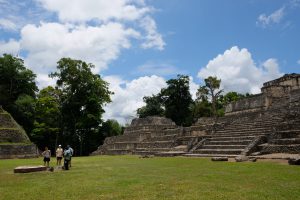
The Magic City is shrugging off its reputation for heat and hedonism, and embracing its new status as a cultural powerhouse. Amelia Duggan discovers a dynamic, re-energised destination with stunning ocean views
“I told you, there’s nothing like partying on Ocean Drive!” my cousin shouts from the bar, as the barman hands her a vast, swirling cocktail in a cut-glass fishbowl. Sunken LEDs render it a flashing spectacle of pink and green. There are Latin beats on the stereo, a flurry of tanned limbs and painted-on dresses on the dance floor, and not 50ft away, golden sands and the warm ocean. I hadn’t been sure if flashy scenes like this — once Miami’s calling card — still existed.
The Magic City, the wild child of the East Coast, was, I’d heard, all grown up. In 2002, a decade after Hurricane Andrew collided with Florida’s coastline, the international set blew into town for the Art Basel fair, now a biannual fixture. The city’s love affair with high culture bloomed. Nowadays, with the aid of visionary urban renewal projects and the patronage of art and design moguls, Miami’s penchant for excess has developed into something altogether more sophisticated and attractive.
The first stop on my tour of the reformed city is Wynwood, the downtrodden, melting-pot neighbourhood turned-desirablehipster-hangout and street art canvas. A decade ago, Miami’s urban alchemist, developer Tony Goldman, recognised the area’s potential and began to sprinkle his magic. Warehouses became art studios and galleries, and car body shops morphed into cafes and cool stores. Today, trendy hangouts Zak the Baker and Panther Coffee have cult-like status across the city, and hoteliers are starting to invest. Wynwood is a neighbourhood on the up.
I explore a few blocks of fantastical murals — darting between slivers of shade on doodled-on pavements — before finding myself at the neighbourhood’s centrepiece, Wynwood Walls. The al-fresco gallery is a series of towering walls and garage doors, each displaying an artist’s creative talents. There’s a kaleidoscopic cross-hatching of purples and pinks; a trippy elephant with tentacle-like tusks; Studio Ghibli-esque lovers dissolving into wallpaper. It’s a visual feast — a pageant of pop art — attended by a stream of tourists and teens wielding selfie sticks.
The area merits a full day’s exploration, but the punishing humidity defeats me after a while, so I head southeast for the cool of the bay. The Perez Art Museum Miami relocated to Museum Park in 2013, and its new home, near the touristy Bayside Market (the place to pick up a speedboat tour of celebrities’ villas) and soon-to-open Patricia and Philip Frost Museum of Science, is an architectural marvel: three floors of modern art split into cubes and terraces that, from the outside, appear suspended from a giant, shade-giving pergola. Under hanging gardens with their cooling microclimate, Verde restaurant looks out across spindly palms to a roaring causeway and the glistening Biscayne Bay. I spoon down ultra-fresh ceviche, polish off the meal with fryer-fresh doughnuts dunked in guava syrup, and survey the scenery. It’s distinctly Miamian: tropical paradise meets urban concrete jungle.
For my final night in the city, I leave the glamour and glitz of Miami Beach (in the throes of its own regeneration, Mid Beach is emerging from a $1.2 billion chrysalis as the gleaming Faena Cultural District, and the Miami Beach Convention Centre will relaunch as a state-of-the-art MICE business venue in 2018) and head downtown to booming Brickell. South Florida’s financial district became a ghost town after the financial and real estate crash of 2008. But then young people moved in, restaurants and late-night bars arrived, and investors capitalised on the momentum. In just a few years, a sea of glassy, blue-tinted high-rises shot up, and Brickell City Center — an ambitious five-block development with luxury shopping, two residential towers and two mid-rise office towers — has given the borough a swanky nucleus.
I’m staying at East — part of this new complex — a lifestyle hotel where cutting-edge technology meets oriental mysticism (there’s feng shui in the lobby, crystals in the walls and talismans in the lifts). Up at Sugar, the 40th-floor bar, gorgeous people flock in, air kisses are dished out, the DJ heightens the tempo and the sun sinks. While South Beach has a historic claim to be Miami’s heart and soul, the city’s charms have, in recent years, diversified. Once drab neighbourhoods have been thoughtfully crafted into lifestyle and cultural hubs in their own right. While there are still plenty of places to party, a visit to Miami can be so much more. Here’s a city dynamically reinventing itself as a world-class urban destination.
Published in the February 2017 issue of ABTA Magazine











